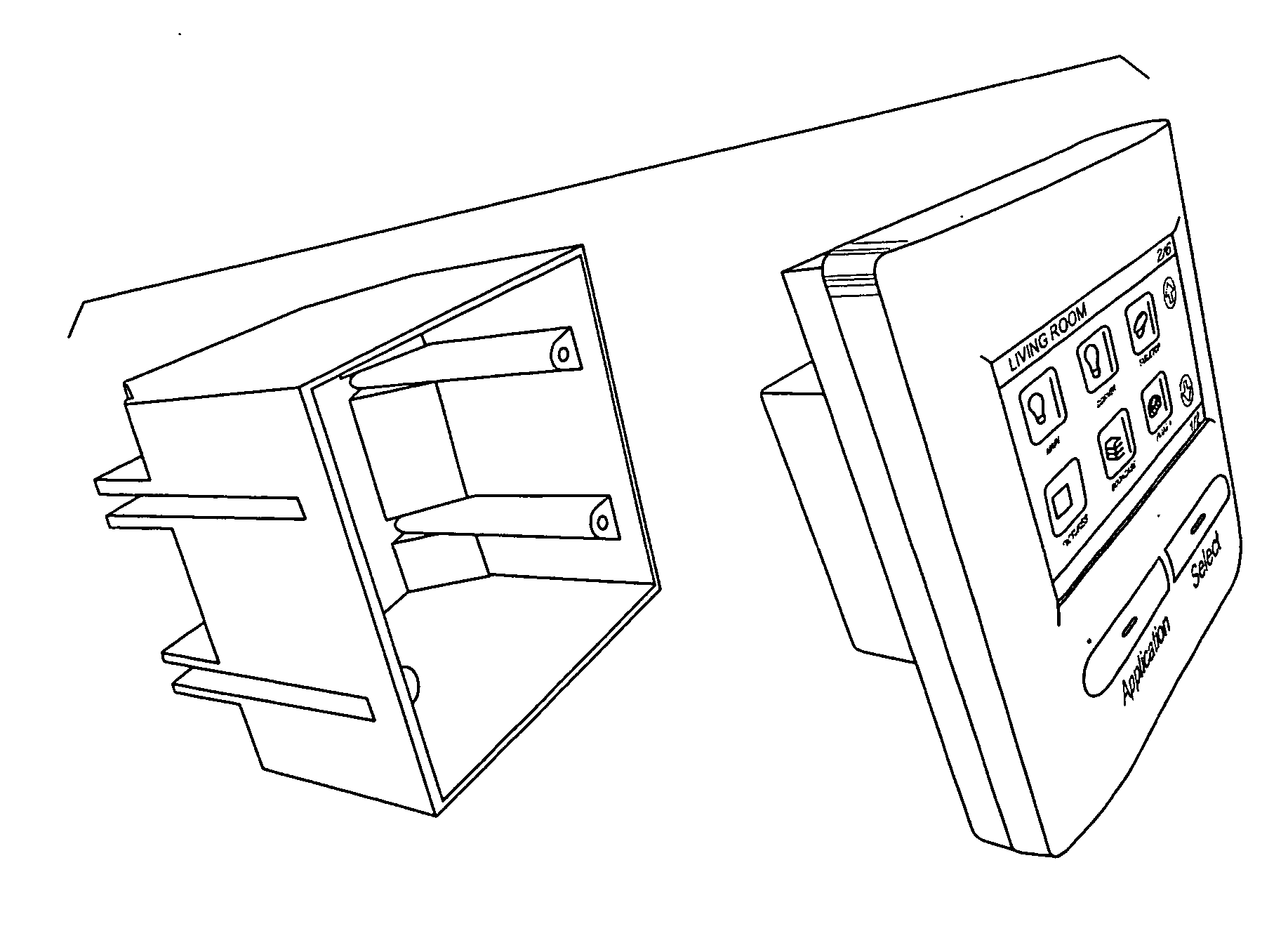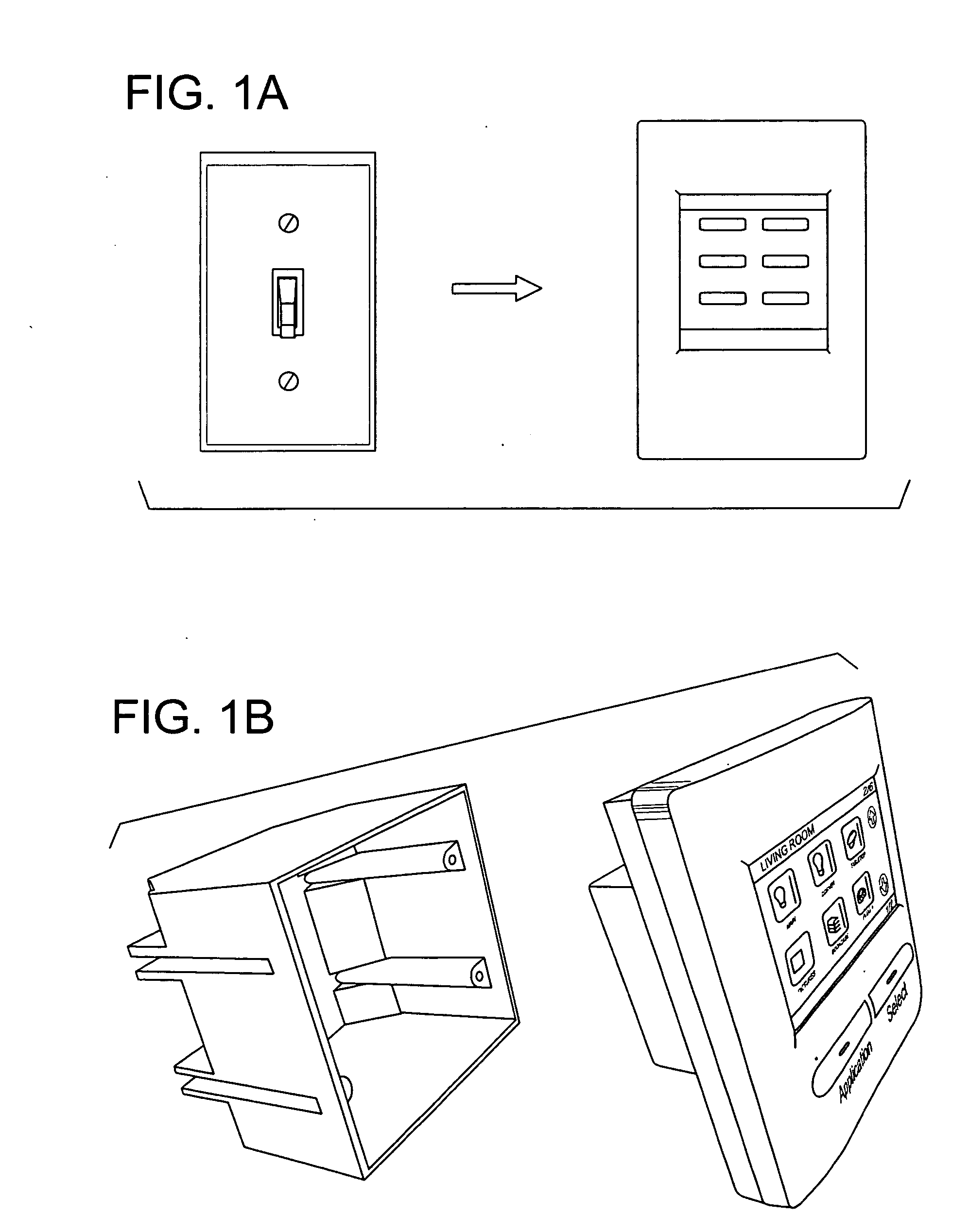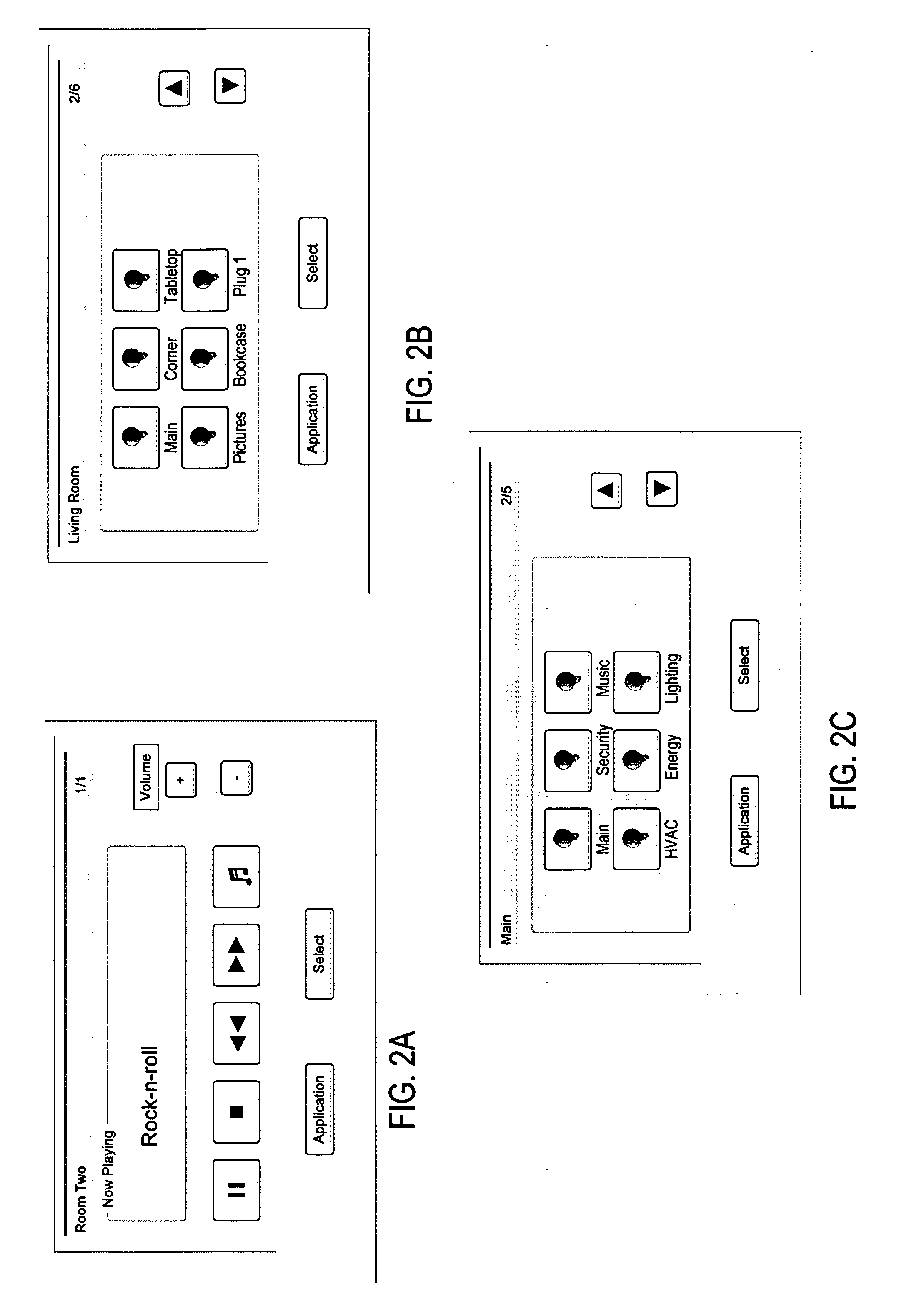Distributed wireless home and commercial electrical automation systems
- Summary
- Abstract
- Description
- Claims
- Application Information
AI Technical Summary
Problems solved by technology
Method used
Image
Examples
Embodiment Construction
[0024] Nomenclature Note: In the provisional application, we used the term “Control Panel” to refer to “microprocessor based electronic device, capable of running operating systems which supports the wireless protocol, graphical user interface, touch screen functionality . . . ”. (Provisional page 3.) In the present application, we will instead use the term “central controller” to refer to various devices and embodiments functionally similar to what was previously called the “Control Panel”. This is to avoid confusion as the typical Central Controller, in accordance with some embodiments of the invention, will itself include a front panel or control panel that provides an interface to the controller.
[0025] Thus “control panel” will be used herein consistent with its ordinary meaning. For example, in one preferred embodiment, a central controller is disposed in a standard electrical box, and the front panel of the central controller is installed over it, similar to a conventional li...
PUM
 Login to View More
Login to View More Abstract
Description
Claims
Application Information
 Login to View More
Login to View More - R&D
- Intellectual Property
- Life Sciences
- Materials
- Tech Scout
- Unparalleled Data Quality
- Higher Quality Content
- 60% Fewer Hallucinations
Browse by: Latest US Patents, China's latest patents, Technical Efficacy Thesaurus, Application Domain, Technology Topic, Popular Technical Reports.
© 2025 PatSnap. All rights reserved.Legal|Privacy policy|Modern Slavery Act Transparency Statement|Sitemap|About US| Contact US: help@patsnap.com



